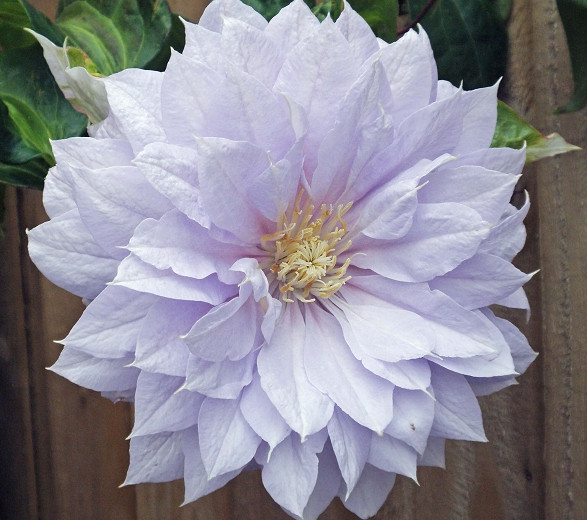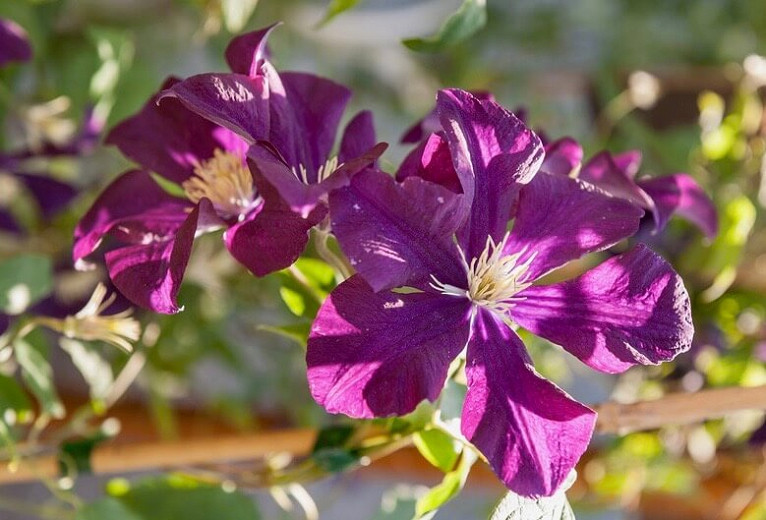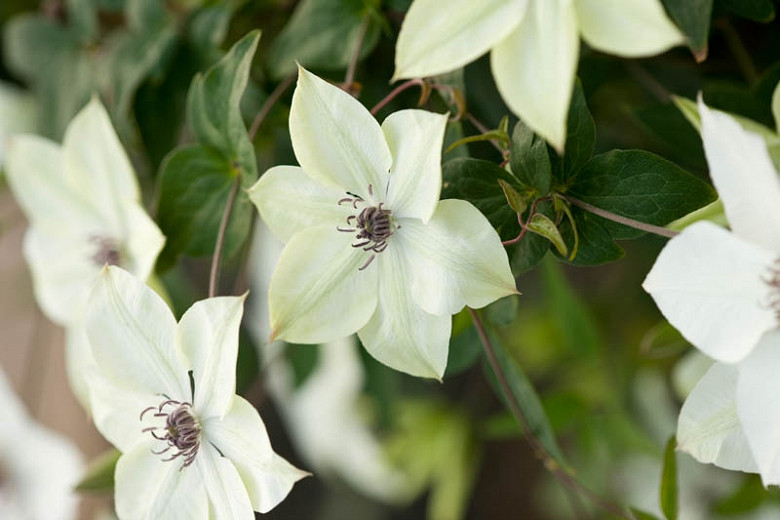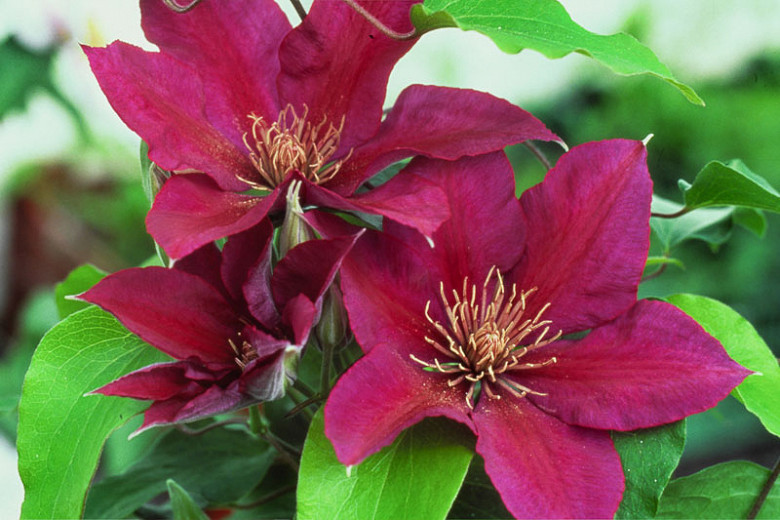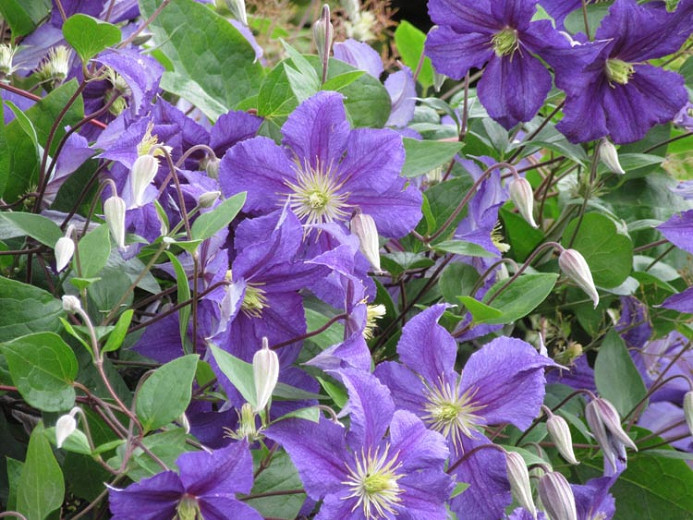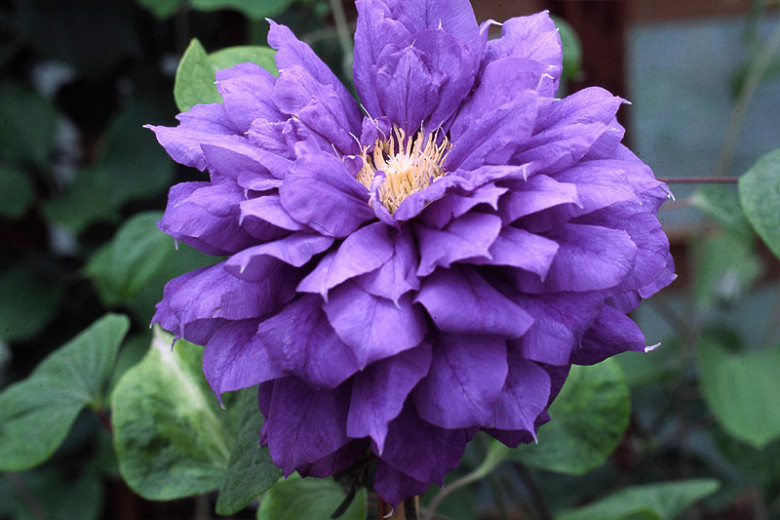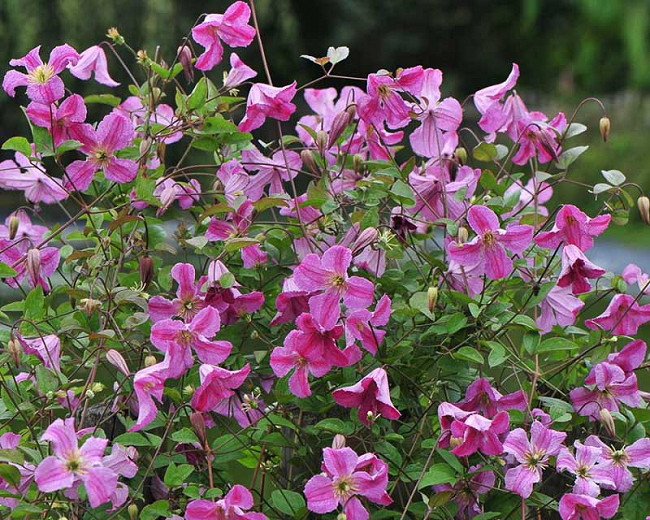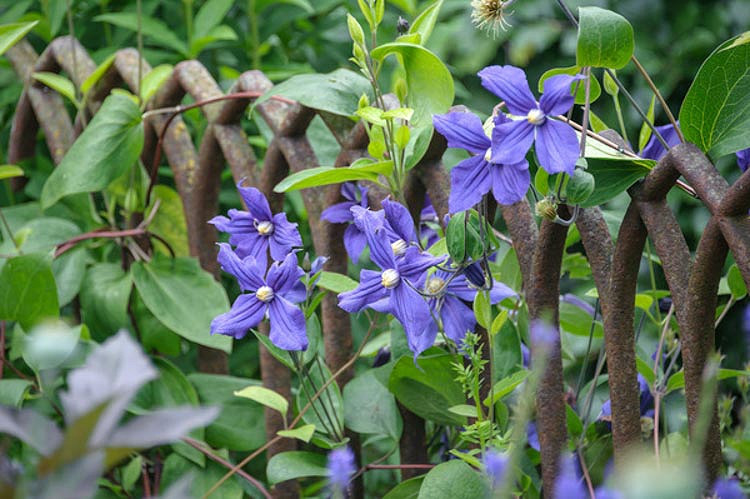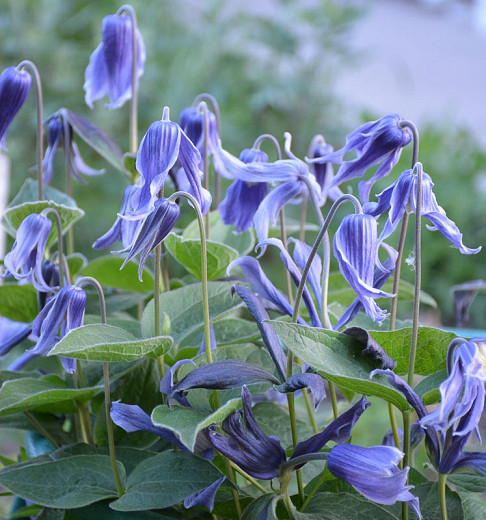Clematis Belle of Woking (Early Large-Flowered Clematis)
Clematis ‘Belle of Woking’ is a deciduous vine that produces a profusion of large, star-shaped, fully double, silvery-mauve flowers, up to 6 in. (15 cm). The ravishing blossoms carry many layers of broad and pointed tepals that gradually fade to a luminescent silvery blue. A gardener’s favorite since its introduction in 1875, Clematis ‘Belle of Woking’ always attracts compliments.
Clematis 'Belle of Woking' is a deciduous vine that produces a profusion of large, star-shaped, fully double, silvery-mauve flowers, up to 6 in. (15 cm). The ravishing blossoms carry many layers of broad and pointed tepals that gradually fade to a luminescent silvery blue. A gardener's favorite since its introduction in 1875, Clematis 'Belle of Woking' always attracts compliments.
- Blooms in late spring to midsummer and late summer to early fall.
- It thrives in moist, well-drained soils, in full sun or part shade. Ideally, Clematis prefer having their 'heads in the sun and their feet in the shade'. Keep the roots cool and shaded by other plants or add a layer of pebbles or flat stones at the base. Afternoon shade is appreciated in hot summer areas.
- Hardy, this clematis can quickly grow up to 8-12 ft. long (240-360 cm).
- Excellent choice for trellis, it can be trained to climb a wall, fence, or arbor and is also well suited to containers. Combines beautifully with other climbers such as roses. Perfect for enlivening rhododendrons.
- This Clematis belongs to the second group of Clematis – a group including Clematis which flower in early summer on short shoots developing from the last year's growth. Some flower again in late summer on new growth. These Clematis vines should be pruned in late winter or early spring before new growth starts and after the first flush of flowers in early summer.
- Prune in late winter or early spring:
Remove dead or weak stems before growth begins. Check individual stems from the top down until you reach a pair of healthy buds, and prune just above them, removing the spindly or damaged growth above. Avoid heavy pruning or flowers will be lost - Then prune again after the first flush of flowers:
To encourage a second flush of flowers later in the season prune back some stems by cutting to large buds or a strong side shoot immediately below the blooms
Top-heavy or overgrown plants can be gradually reduced over two to three seasons by pruning back harder after the first flush of flowers. They are unlikely to produce a second flush of flowers but should flower again the following year, in late spring or early summer - Alternatively, leave clematis in this group unpruned, and then hard prune them to 30-90cm (1–3ft) from the base every three or four years in late winter (as for pruning group three). In the first year after renovation, they will only flower once.
- Toxic to dogs, toxic to cats, toxic to horses.
Requirements
| Hardiness | 4 – 8 |
|---|---|
| Heat Zones | 1 – 9 |
| Climate Zones | 2, 3, 4, 5, 6, 7, 8, 9, 10, 11, 14, 15, 16, 17, 18, 19, 20, 21, 22, 23, 24, A2, A3 |
| Plant Type | Climbers |
| Plant Family | Clematis |
| Exposure | Full Sun, Partial Sun |
| Season of Interest | Spring (Late)Summer (Early,Mid,Late)Fall |
| Height | 8' – 12' (240cm – 3.6m) |
| Spread | 1' – 2' (30cm – 60cm) |
| Spacing | 15″ – 18″ (37cm – 45cm) |
| Water Needs | Average |
| Maintenance | Low |
| Soil Type | Chalk, Clay, Loam, Sand |
| Soil pH | Alkaline, Neutral |
| Soil Drainage | Moist but Well-Drained |
| Characteristics | Showy |
| Tolerance | Deer |
| Garden Uses | Arbors, Pergolas, Trellises, Beds and Borders, Patio and Containers, Wall-Side Borders, Walls and Fences |
| Garden Styles | City and Courtyard, Informal and Cottage, Traditional Garden |
